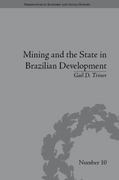Question
QUESTION 4 [20 points] Chapter 20, Question 13 Second-hand smoke I. Assume that the daily demand for packs of cigarette in the tobacco-addicted nation of
QUESTION 4 [20 points] Chapter 20, Question 13 Second-hand smoke I.
Assume that the daily demand for packs of cigarette in the tobacco-addicted nation of Pcoria is as follows:
Q = 100 - P
Further assume that the marginal cost of producing a pack of cigarettes is $6, and that the market for cigarettes is perfectly competitive. Assume that each pack of cigarettes smoked does $6 worth of health damage to the smoker in the form of increased cancer risk and a total of $5 worth of health damage to the smoker's neighbors via second-hand smoke. Finally, assume that all Pcorian cigarette consumers are aware of these costs.
(a)Assume that a Pcorian smoker named Jay states that he is willing to buy a pack of cigarettes for $8, but not a penny more. In this market, where the price is $6 per pack, what are the private benefits and private costs incurred whenever he buys a pack of cigarettes? Is it privately efficient for him to buy a pack of cigarettes at this price?
(b)What about the public benefits and public costs? Is it socially efficient for him to buy a pack of cigarettes at this price?
(c)Suppose that, due to the introduction of a hyper-effective tobacco fertilizer, the cost of producing a pack of cigarettes plummets to $1. Now is it socially efficient for Jay to purchase a pack of cigarettes?
QUESTION 5 [25 points]
Chapter 20, Question 14 [40 points]
Second-hand smoke II.
Review the assumptions from the previous problem, and assume that it still costs $6 to produce a pack of cigarettes.
(a)Draw the private supply curve and the private demand curve in this market. What is the privately efficient quantity of packs purchased per day?
(b)Draw the public supply curve in this market. Explain why it differs from the private supply curve, and how this represents the externality from second-hand smoke. Highlight the area(s) of your diagram that represent social loss, and interpret this loss in terms of cigarette smoking.
(c)What is the socially efficient quantity of packs purchased per day?
(d)Suppose that, due to the introduction of a hyper-effective tobacco fertilizer, the cost of producing a pack of cigarettes plummets to $1. How does this affect the level of smoking and the level of social loss? Explain.
(e)Suppose the government decides to pursue a Pigouvian solution to eliminate social loss. What sort of tax or subsidy would they implement, and what is the resulting quantity of cigarette packs purchased?
(f)The opposition party in the Pcorian parliament loudly opposes the proposed tax plan as government meddling. The opposition leader invokes the Coase Theorem and says that the socially efficient level of smoking will occur even in the absence of government intervention. How are property rights assigned in this instance? Why might the Coase Theorem not apply in this setting?
Step by Step Solution
There are 3 Steps involved in it
Step: 1

Get Instant Access to Expert-Tailored Solutions
See step-by-step solutions with expert insights and AI powered tools for academic success
Step: 2

Step: 3

Ace Your Homework with AI
Get the answers you need in no time with our AI-driven, step-by-step assistance
Get Started


